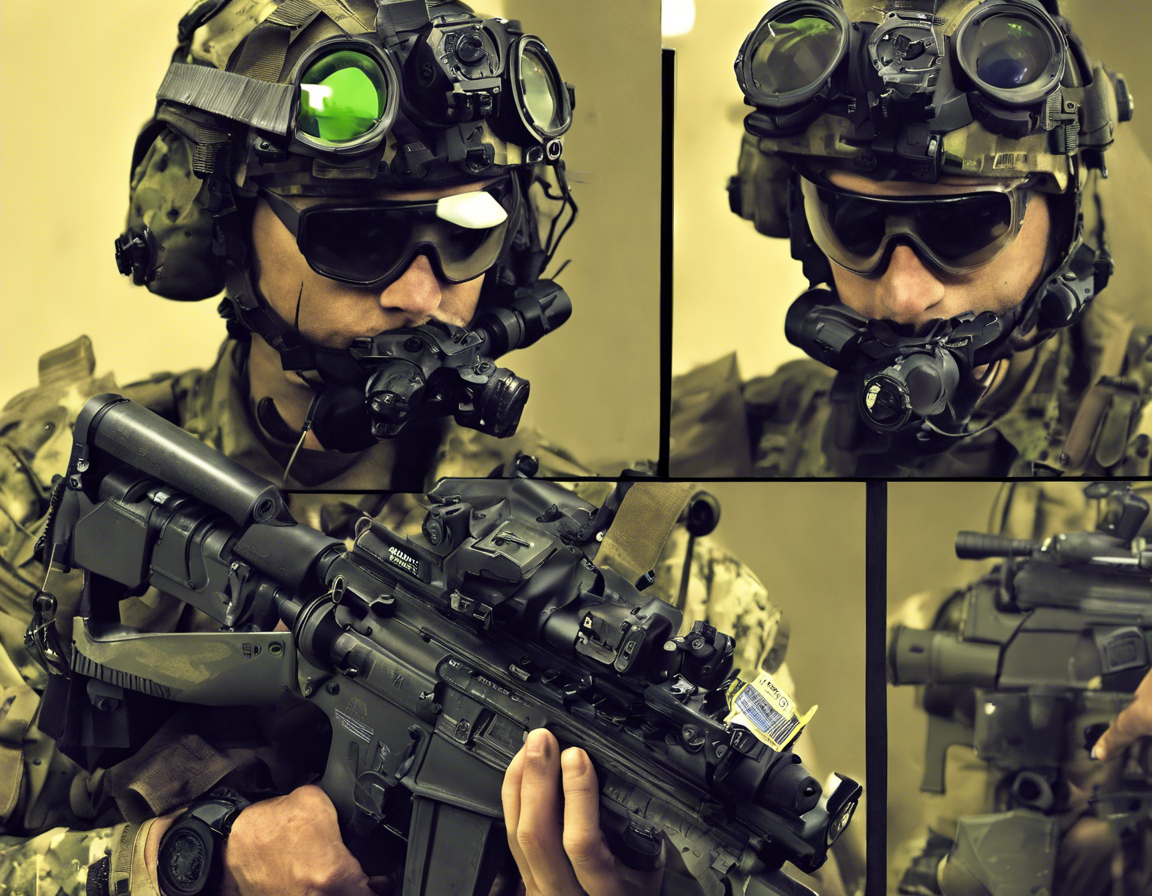
Exploring the Latest in NVG Technology
Night Vision Goggles (NVGs) have long been a crucial tool for military operations, surveillance, hunting, and various other nocturnal activities. The technology has evolved significantly over the years, with newer models offering improved clarity, range, and functionality. In this article, we will delve into the latest advancements in NVG technology, highlighting their features, benefits, and applications.
Evolution of NVG Technology
Generation 0 to Generation 3
Night Vision Technology has come a long way since its inception. The first-generation NVGs, also known as Gen 0, were introduced during World War II and relied on active infrared illumination. These devices were bulky, had limited range, and exhibited poor image quality. Subsequent generations brought about significant improvements, with Gen 3 NVGs being the current standard for military-grade night vision equipment. These devices offer excellent image resolution, extended range, and enhanced performance in low-light conditions.
Digital NVGs
In recent years, Digital NVGs have gained popularity due to their numerous advantages over traditional image intensifier tube (IIT) NVGs. Digital NVGs use digital sensors to capture and display images, offering clearer visuals, higher resolution, and the ability to record video or capture still images. They also provide a more seamless transition between light levels, reducing blooming and image distortion commonly associated with IIT NVGs.
Key Features of Modern NVGs
High-Resolution Displays
Modern NVGs are equipped with high-resolution displays that provide crisp and clear images in low-light conditions. These displays allow users to effectively navigate dark environments without compromising on image quality.
Long-Range Infrared Illuminators
Many NVGs now come with long-range infrared illuminators that extend the device’s effective range in complete darkness. These illuminators emit infrared light, which is invisible to the naked eye but can be detected by NVGs, enhancing visibility over long distances.
Wireless Connectivity
Some advanced NVGs feature wireless connectivity options, allowing users to stream live footage to external devices such as smartphones or tablets. This feature enables real-time sharing of information and coordination among team members in the field.
Thermal Imaging Capabilities
Certain NVGs are equipped with Thermal Imaging capabilities, allowing users to detect heat signatures and objects in total darkness. Thermal imaging enhances situational awareness and can be particularly useful for search and rescue operations, surveillance, and wildlife observation.
Built-In GPS and Augmented Reality
Incorporating GPS and Augmented Reality functionalities, some NVGs provide users with navigational assistance and overlay digital information onto the night vision display. This feature can display waypoints, compass headings, and other relevant data, enhancing operational efficiency and decision-making.
Applications of Modern NVGs
Military Operations
The military continues to be a significant user of NVG technology, employing it for reconnaissance, surveillance, target acquisition, and tactical maneuvers. Modern NVGs enhance soldiers’ visibility in low-light environments, giving them a crucial advantage on the battlefield.
Law Enforcement
Law enforcement agencies utilize NVGs for surveillance, search and rescue operations, and SWAT team deployments. NVGs help officers navigate dark environments safely and apprehend suspects discreetly.
Hunting and Wildlife Observation
Hunters often use NVGs for nocturnal hunting activities, enabling them to track game and move through the wilderness under the cover of darkness. Wildlife enthusiasts also employ NVGs for observing animals in their natural habitat without disturbing them.
Outdoor Recreation
Outdoor enthusiasts such as campers, hikers, and spelunkers benefit from NVGs during nighttime activities. These devices enhance safety and visibility in remote areas where ambient lighting is limited.
Search and Rescue
Search and rescue teams rely on NVGs to locate missing persons in low-light or challenging environments. The enhanced visibility provided by NVGs expedites search efforts and increases the chances of a successful rescue operation.
Frequently Asked Questions (FAQs) about NVGs
1. What is the difference between image intensifier tube (IIT) NVGs and digital NVGs?
IIT NVGs amplify existing light to provide visibility in the dark, while digital NVGs use digital sensors to capture and display images with higher resolution and clarity.
2. How far can NVGs see in complete darkness?
The effective range of NVGs in complete darkness depends on various factors such as ambient light conditions, the model of NVGs, and the presence of infrared illuminators. Modern NVGs can typically see up to several hundred meters in complete darkness.
3. Are NVGs legal for civilian use?
NVGs are legal for civilian use in many countries, but restrictions may apply, particularly concerning the use of NVGs for hunting or surveillance. It is essential to check local regulations before purchasing or using NVGs.
4. Can NVGs be used during the day?
While NVGs are optimized for low-light conditions and nighttime use, excessive exposure to bright light sources, such as daylight, can damage the device. Some NVGs come with a daylight filter attachment for limited daytime use.
5. How long do NVG batteries typically last?
The battery life of NVGs varies depending on the model and usage. On average, NVG batteries can last anywhere from several hours to over 20 hours, with rechargeable options available for extended use.
Conclusion
The continuous advancement of NVG technology has revolutionized nighttime operations across various industries. From military applications to outdoor recreation, modern NVGs offer unparalleled visibility and functionality in low-light environments. As technology progresses, we can expect further innovations in NVG design and capabilities, expanding their usability and effectiveness in diverse scenarios.
